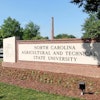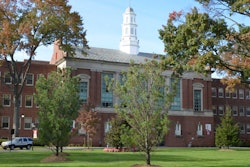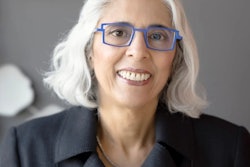Last month, a group of college and university attorneys convened for two full days in Boston to learn about and discuss the legal parameters for seeking diversity in science, technology, engineering and mathematics (STEM) at their home institutions. They also were joined by STEM faculty, chief diversity officers, directors of diversity offices and policy-focused individuals at national education associations and think tanks.
The associated project, Access and Diversity in STEM, led by the American Association for the Advancement of Science Education Counsel, and counsel from the University of Florida, seeks to provide a space for campuses to look inward and work with their general counsel in the formulation of programs aimed at attracting a diverse student and faculty body in the STEM disciplines.
I’ve written about this effort before when I posted an earlier product of the project: The Handbook on Diversity and the Law (published with the Association of American Universities), a post-Michigan-era guide on legally sustainable diversity initiatives for university leadership and counsel. While the handbook is itself instructive, the meeting in Boston was, for me, a vivid in-person display of the types of conversations that must take place in order for university officials to design effective and legally sustainable diversity initiatives.
If the conservative groups that brought forth attacks on affirmative action—via the Grutter and Gratz vs. Bollinger cases—accomplished anything, it was the unfortunate installment of fear in college and university leadership nationwide. Fear that their own outreach, admissions, retention and hiring programs may themselves face legal reprisal.
Instead of backing down or working under an unknown, many (but certainly not all) institutions have armed in-house counsel with the tools to advise offices of academic and student affairs, admissions and financial aid, and faculty search committees to put in place effective and legally sustainable policies and practices. The Access and Diversity in STEM project is indeed a guidepost for such efforts.
The project instructs and empowers campus leaders and their counsel to vocalize the imperative of diversity in STEM and helps put into place institutional policy to meet diversity goals. In addition to institutional focus, project leaders in Boston led discussions on how to create not only local change, but also broad systemic change, by working across institutional offices and across institutions themselves.
As a first step, provosts, general counsel, faculty and others were instructed by project leaders to focus on existing barriers to inclusion, including recognizing the existence of a complex legal landscape and fostering a common understanding of effective diversity programs that are also legally sustainable. Such an effort likely includes productive partnership building between academic programs and legal experts to design and implement policies that seek to achieve campus diversity goals while further building a culture of inclusivity on campus and in STEM classrooms and laboratories.
The beauty of focusing on increasing STEM diversity from the inside out—within campus environments and into the STEM workforce—is the ability to also harness the passion of educators to advance STEM teaching and learning.
While the Obama administration, state legislatures, business community and national media outlets continue to rightly focus on the economic case for diversity, campuses are also right to embrace the academic case for inclusion. Whether a future scientist or engineer, social scientist or young entrepreneur, STEM literacy and innovative thinking as a learned skill is of great benefit to our citizenry at large.
And given that diversity is embedded in most institutional missions, how universities choose to act upon this portion of their mission is often individual, which again emphasizes the value of an aligned legal counsel and academic and non-academic staff.
Counsels are further wise to work with academic leadership to better understand how diversity impacts their local economy, business enterprise, and social betterment. And it is up to faculty, staff, students, trustees, and other members of the campus community to hold institutions up to the standards they have set.
The Michigan cases remind us of the need for broad legal support of diversity, for both public and political will building, and for building and sustaining effective policies and practices that support institutional missions, academic excellence, and inclusive environments for STEM students and faculty. Hats off to the Access and Diversity in STEM project for helping us get there.
Note to the reader: The next Access and Diversity in STEM workshop will be held on the campus of Rice University in Houston, December 6-7, 2011. For registration information, contact Sabira Mohamed at [email protected]. For queries about workshop content, contact Daryl Chubin at [email protected].
Dr. Lorelle L. Espinosa is the director of policy and strategic initiatives at the Institute for Higher Education Policy, a Washington, D.C.-based independent, nonprofit organization that is dedicated to increasing access and success in postsecondary education around the world.


















